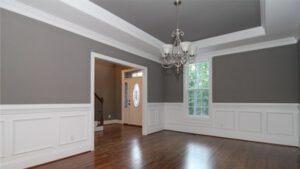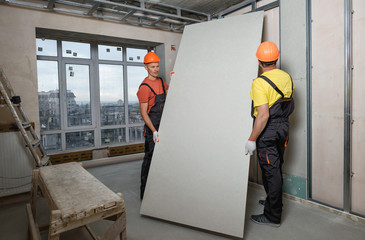There are many different types of interior painting jobs that you can do to your home. If you want to update your home, you can try to do the job yourself or you can hire someone to do it for you. For example, you can paint the inside of your home, the outside of your home, or both. But you need to make sure that you know what you’re doing. Luckily, there are plenty of guides available to help you do the job correctly.

Low-VOC paints are a great way to preserve the environment and reduce indoor air pollution. They are also a healthier option for your family and pets. It’s important to choose paints with third-party certifications.
VOCs are a type of carbon-containing compound that is released into the air as gasses. These chemicals can be hazardous in the short term and long term. Inhaling these gasses can contribute to headaches, nausea, eye irritation, and liver damage.
The best way to reduce your exposure to these toxic fumes is to install an air purifier. You may also want to consider moving furniture outdoors. Adding potted plants to the room can also help filter the air.
The length of time it takes for low-VOC paints to off gas depends on the type of paint used and the climate in which it’s applied. Most latex paints off-gas for three to five years, while some other types of paints will off-gas for even longer.
Fortunately, many manufacturers have developed products with fewer VOCs. Some low-VOC paints contain as little as five grams of VOCs per liter. However, you can’t expect them to completely seal off VOCs from the coatings underneath.
Low-VOC paints are a safer and less expensive alternative to traditional paints. If you’re planning to remodel your home on a budget, it’s worth considering these paints.
The best choice is often to use zero-VOC paint. This will ensure you’re not inhaling any of these dangerous toxins.
If you are looking for high-gloss interior paint, you’ve come to the right place. It’s one of the shiniest paint finishes available and can be used in a number of applications.
High-gloss finishes offer the highest reflectivity and durability. They are also easy to clean and can hold up to high humidity. This makes them perfect for indoor and outdoor use.
While high gloss is one of the most durable sheens, it does have the tendency to show imperfections. This means it might not be a good choice if you want to hide scratches or stains. However, it can be a great accent for walls and trim.
For rooms that will receive a lot of heavy usages, you may consider choosing a paint finish with a higher sheen. A higher gloss level will also allow you to see more imperfections, such as rolls and bumps.
On the other hand, a high-gloss finish is also more reflective, so it’s not a great choice for hiding imperfections in walls. You may need to apply multiple coats to achieve the same results.
Semi-gloss and eggshell are two popular paint finishes. They have a lustrous look, but they are less durable than satin or high-gloss.
Satin is a middle ground between high gloss and eggshell. It is perfect for a wide variety of room types, from dining rooms to living rooms.
If you are looking to cover up an ugly drywall mess or want to add some character to your new home, there are several ways to do it. However, texturing your walls is a little more complicated than just slapping some paint on a wall. Fortunately, it is also a relatively inexpensive project.
The best way to texture a wall is to apply a layer of joint compound. A thick layer will give you a more defined texture. To do this, you’ll need a roller, a brush, and perhaps some plastic sheeting. Using the correct techniques, you can turn a dull surface into something extraordinary.
You’ll need to prime the wall with a drywall primer before applying the compound. Be sure to apply a coat of polyurethane as well. Once the texture has cured, you’ll be ready to paint. It’s a good idea to cover up the floor and other adjacent surfaces with drop cloths. Ideally, you’ll want to do this one room at a time.
